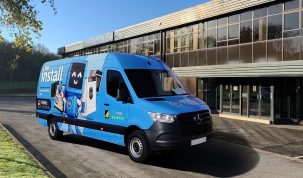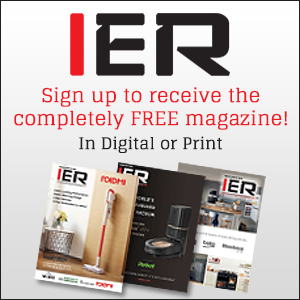
The growth of DAB radio has lagged behind the predictions. Yet the choice of products, their fast expanding functionality, coverage and content is steadily building consumers’ confidence in DAB radio, concludes George Cole.
Just before Christmas 2010, Digital Radio UK (DRUK), the trade body promoting DAB, put out a bullish press release on its progress. The release noted that DAB radio sales had reached a landmark, with cumulative sales reaching 12 million units.
It also forecast that DAB sales for 2010 would reach 2 million units and that cumulative DAB sales were on track to reach 20 million pieces by the end of 2013. But in fact, DAB sales for 2010 were 1.91 million pieces, compared with 1.95 million for 2009 and 2.1 million for 2008. DRUK states that in Q4 2010, 750,000 digital radios were sold, which was flat, year-on-year. Retailers had reported strong digital radio sales up until the snow, when sales were badly hit, adds DRUK.
Market trends
“The total consumer electronics sector fell by 6% in the last 12 months in value (MAT January 2011) which was the exact same trend reported for the DAB market. However volume sales were only marginally lower than the previous year (-0.7%) at 1.92 million units,” explains Simon Foy, GfK senior account manager, CE.
“The best performing area of the main categories for DAB is the clock radio market, with sales rising 10% and 6% in volume and value respectively on the moving annual total comparison. The most important category for sales remains the portable radio at half of the annual volume sales. It is also the main area which has developed for internet radio sales, and now over 10% of the value of DAB portable radios also have internet radio functionality. This penetration of internet radio at the higher end of the portable radio price range has helped to offset price erosion elsewhere, so the overall average price for a DAB portable radio only fell by £1 in the MAT comparison.”
So have DAB sales stalled or are we really on track for 8 million more DAB radios being sold in less than three years? Ford Ennals, Digital Radio UK’s chief executive, remains optimistic and says that the DAB market will grow by 8-10% this year. So what makes him so upbeat about DAB’s prospects? “I think we’ll see a step-change this year, with the launch of new content, the building out of coverage and a general awareness of the digital radio switchover plan. The BBC has major announcements on new digital services, and we’ll see more aggressive digital radio campaigning on TV and radio. All this will help drive demand for digital.”
The Digital Radio Action plan says switchover from analogue won’t start happening until at least 50% of radio listening is digital. Digital radio listening (DAB, internet, digital TV) accounted for 25% of the market in December 2010, up 4.1% year-on-year, says Rajar, the radio research body. DAB’s share was 15.8%, a year-on-year rise of 2.1%. But analogue radio listening also grew in the same period, (albeit only slightly), from 66.6% in 2009 to 67% in 2010. Despite two thirds of listeners still using analogue radio, Ennals believes that, if you extrapolate digital radio’s recent growth pattern, the 50% target could be achieved by the end of 2014.
Product developments
If DAB sales don’t reach the figures forecast by DRUK, it won’t be due to lack of product. There are a wide range of DAB models on the market, including portable models, music systems, in-car systems, docking stations and clock radios. Pure has 32 DAB products in its current range; Roberts, 31; with Sony and Philips each having nine. Most models also include FM functionality, although Sony offers three DAB-only products. DAB manufacturers believe that a number of factors are driving the DAB market. Owen Watters, sales and marketing director, Roberts Radio, says, “The three biggest drivers are: more choice, clearer sound transmission and ease of use.”
For Colin Crawford, director of marketing, Pure Imagination Technologies, it’s, “Promotion and new content from broadcasters, along with the campaign being planned by DRUK.” He also thinks that integration with other key technologies – such as iPod dockers – also helps. Philips believes that a consistent, high quality national DAB signal, a diversity of content, and a diversity of DAB product, encourage migration from FM. Ben Law, Sony’s audio category marketing manager Sony thinks that, “One of the biggest drivers for DAB is how the motor industry adopts the technology; installing it into new vehicles and making it easy to replace factory fitted models.” Law also thinks that the integration of DAB tuners into existing consumer devices (such as hi-fis, clock radios, TVs and mobile phones) will drive increased usage.
The challenges
DRUK’s Ennals is not convinced by the argument that most consumers are more than satisfied with analogue radio, “I was involved in the digital TV roll-out, and I kept hearing that people were perfectly happy with four or five channels. Wind forward five years, and around 93% of homes have digital TV, and people say they couldn’t live without some of their digital service.” However, Ennals concedes that four major challenges face DAB: coverage, content, cars and communication. DAB coverage is constantly improving – the BBC has rolled out 30 new transmitters in 2010 and boosted the signal for 8.5 million people, but it’s still a bugbear for listeners on the fringes of DAB reception. The BBC’s national digital radio coverage currently stands at 88% of the UK population and the aim is to increase this figure to 92% by the end of this year. Coverage for the commercial radio multiplex Digital One is around 85-90%. It’s estimated that an additional £100-200 million will need to be spent on further improving DAB coverage, especially for local services. The radio industry is currently trying to thrash out an agreement over who pays for this – commercial radio operators think the BBC should.
When it comes to DAB content, there are currently 23 national services on DAB (11 BBC and 12 commercial), plus an additional 449 local and regional services across the UK, including duplicates (where one station can be received in multiple locations). This is a fair selection, especially since a lot of content is exclusive to digital, but DAB local radio services need to be increased. Getting DAB into the 30 million or so cars on the road is a massive challenge and one that all manufacturers put at or near the top of their DAB to-do lists. “In-car is really important,” says DRUK’s Ennals, adding that the Digital Radio Action Plan has galvanised car manufacturers, “The Motor Manufacturers Industry say they will have digital radio as standard in all new cars by 2013.” There are also plans to support conversion of in-car radios to digital radios through a network of dealers and auto retailers. “We need to ensure that everyone can enjoy digital radio in their cars,” says Ennals.
Communication about DAB has been inconsistent and left many members of the public confused, or in some cases, misinformed. Take the example of DAB radios and battery power – many media reports suggest DAB radios soon eat up batteries, but Ennals says the industry hasn’t done enough to highlight the report by Intellect which noted that today’s energy efficient DAB radios were comparable with their analogue counterparts when it comes to battery performance.
DAB’s progress also hasn’t been helped by the public spats between commercial radio operators and the BBC. The reaction of some commercial operators to the pre-Christmas “Digital Radio, more to love” campaign was hostile, with one chief executive describing it as “fundamentally immoral and dishonest” and there was even a threat to run a count
er campaign, “A DAB radio may be for Christmas but might not be for life”. Roberts’ Watters is concerned about the relationship between the BBC and commercial radio when it comes to DAB, “It leads to further confusion and uncertainty amongst consumers. In order to get consumers to buy into the DAB proposition everyone needs to work together and convey the same messages to reassure them. There needs to be a more ‘joined-up’ approach between the broadcasters and the manufacturers.”
Philips says that any gap in an industry that is trying to migrate to a new platform is not good, and can create potential confusion and doubt in consumers’ minds, as well as mixed messages about the commitment of the industry to DAB. “The BBC and DRUK need to remain open and transparent, but also remain receptive to the feedback of commercial radio as a key stakeholder in this process,” Philips concludes. But Pure’s Crawford thinks it’s more about commercial operators adopting a negotiating position for the funding of the roll-out of regional and local DAB.
Promoting DAB
On a more positive note, DAB manufacturers were generally pleased with the Christmas campaign, “It was an important vehicle in promoting DAB digital radio and highlighted some of the unique benefits during a key trading period,” says Roberts’ Watters. Last year’s Radio Amnesty scheme, which encouraged listeners to replace their analogue radios with DAB models, attracted more than 30,000 analogue radios, and the campaign will be run again this summer.
With some supermarkets selling DAB radios for less than £30, the pressure is on independents. But Sony’s Law says, “Indies will differentiate as they have always done against the supermarket channel – by offering expert advice about the right kind of product to fit the customers’ needs. The DAB market isn’t just about selling radios – it is about the integration of DAB tuners into other products such as hi-fis.” Pure’s Crawford agrees, “Consumers still have lots of questions about digital radio, and independents are better placed than any to answer them.” For Roberts’ Watters, “Independents have strong and trusted relationships with their customers, who come to them for advice and guidance when buying radios, an advantage they hold over supermarkets. And manufacturers can help by encouraging consumers to get advice from their local independent dealers when looking to purchase.”
DAB radios will remain high profile products again this year. “We have a lot of exciting new DAB models coming out this year; we have more contemporary designs coming through and we’ll be further developing our ecologic and Wi-Fi range,” says Roberts’ Watters. “We plan to work closely with all the stakeholders in the governments Digital Action Plan to ensure that the focus is on strong positive promotion of digital radio throughout 2011,” says Pure’s Crawford.











